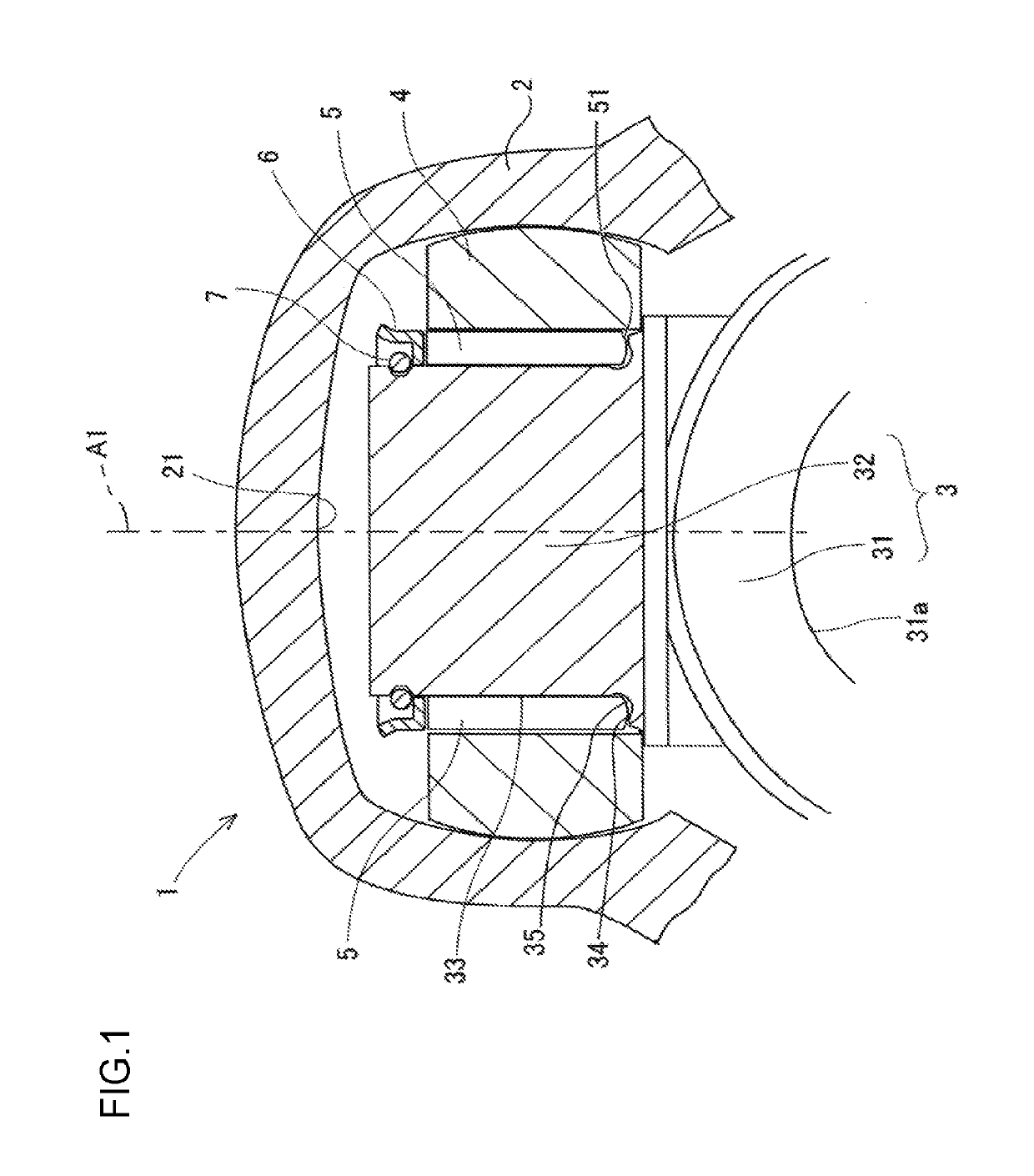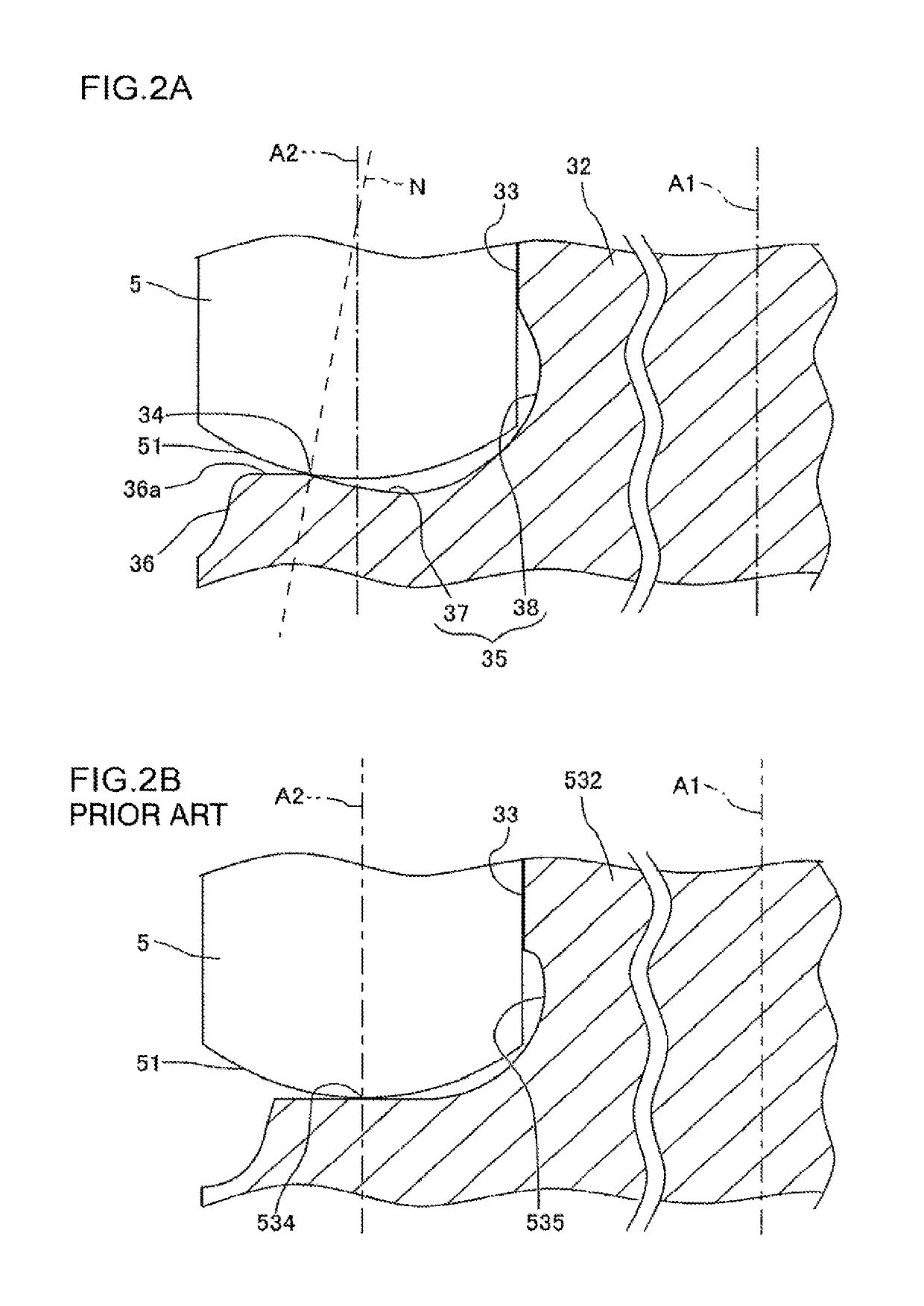Constant velocity joint
a constant velocity, joint technology, applied in the direction of couplings, mechanical equipment, rotary machine parts, etc., can solve the problems of reducing the strength of the base portion of the tripod shaft and deteriorating the torque transmission efficiency, so as to reduce the deterioration of strength, efficient transmission of torque, and constant velocity
- Summary
- Abstract
- Description
- Claims
- Application Information
AI Technical Summary
Benefits of technology
Problems solved by technology
Method used
Image
Examples
Embodiment Construction
[0020]Hereinafter, an embodiment to which a constant velocity joint of the present invention is applied will be described with reference to the accompanying drawings. First, a constant velocity joint 1 of one embodiment of the present invention will be schematically described with reference to FIG. 1.
[0021]As shown in FIG. 1, the constant velocity joint 1 is a tripod constant-velocity joint of a single roller type, and is used at, for example, a coupling portion between a differential gear of a vehicle and an intermediate shaft of a drive shaft. The constant velocity joint 1 mainly includes an outer joint member 2, an inner joint member 3, three rollers 4, a plurality of needle bearings (needle roller bearings) 5, three retainers 6, and three locating snap rings 7.
[0022]The outer joint member 2 is formed like a closed-end cylinder, and is provided, on an outer side of the bottom of the outer joint member 2, with a stem (not shown) that is connected to the differential gear (not show...
PUM
 Login to View More
Login to View More Abstract
Description
Claims
Application Information
 Login to View More
Login to View More - R&D
- Intellectual Property
- Life Sciences
- Materials
- Tech Scout
- Unparalleled Data Quality
- Higher Quality Content
- 60% Fewer Hallucinations
Browse by: Latest US Patents, China's latest patents, Technical Efficacy Thesaurus, Application Domain, Technology Topic, Popular Technical Reports.
© 2025 PatSnap. All rights reserved.Legal|Privacy policy|Modern Slavery Act Transparency Statement|Sitemap|About US| Contact US: help@patsnap.com


